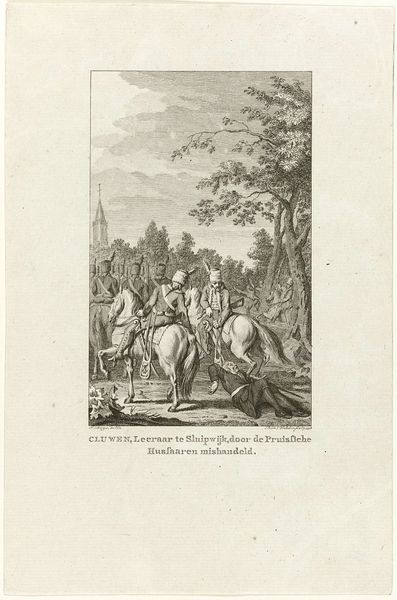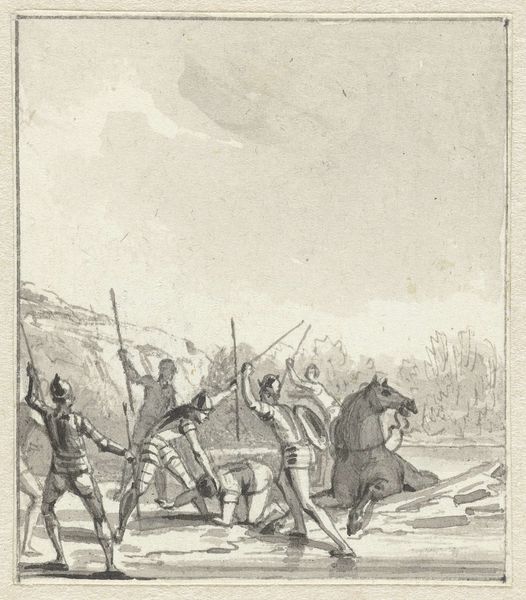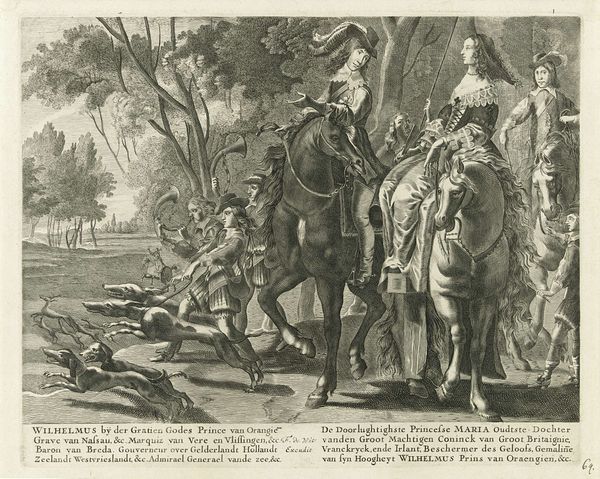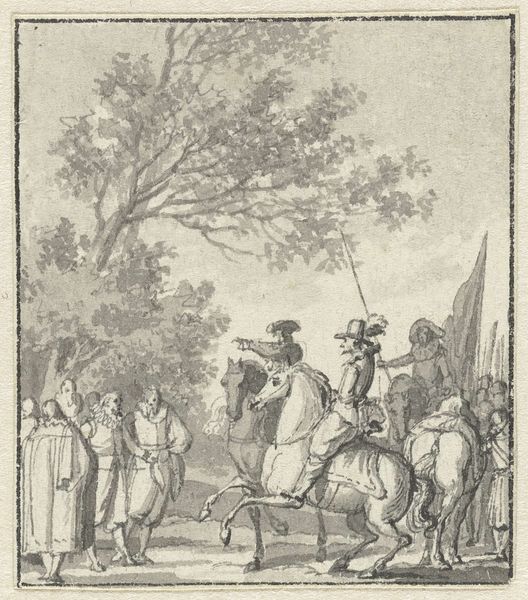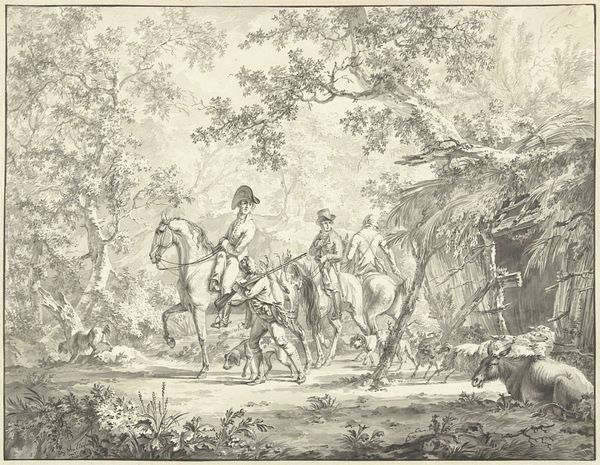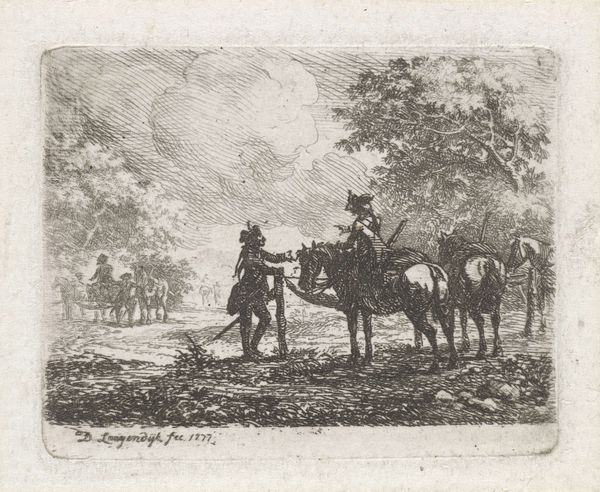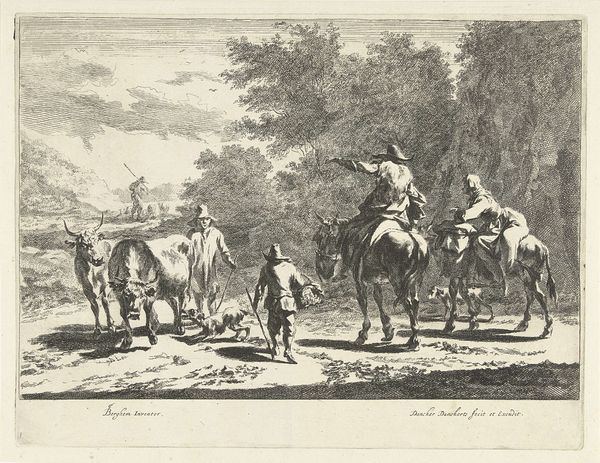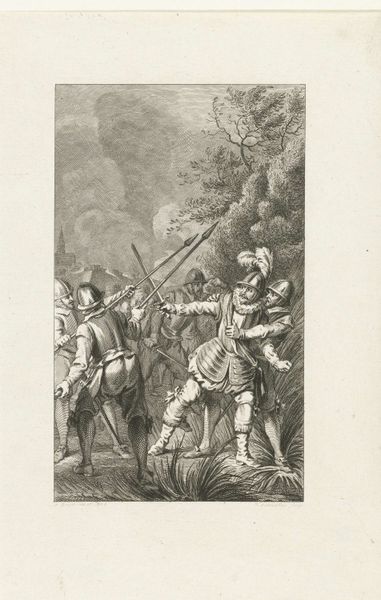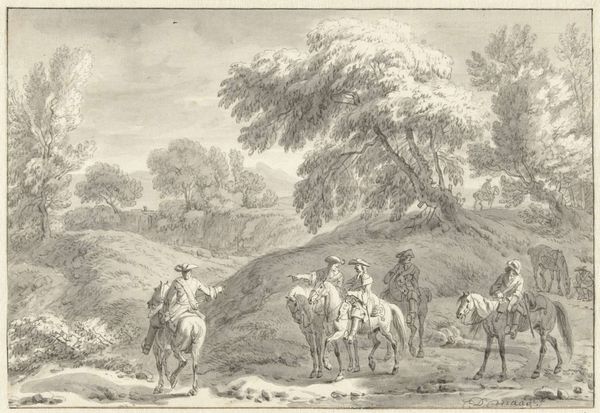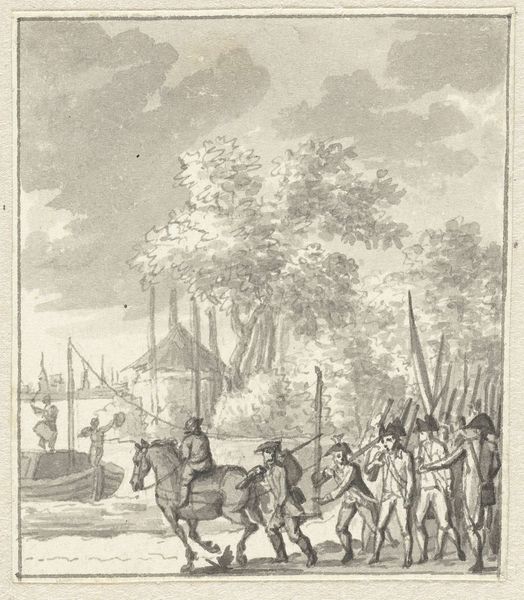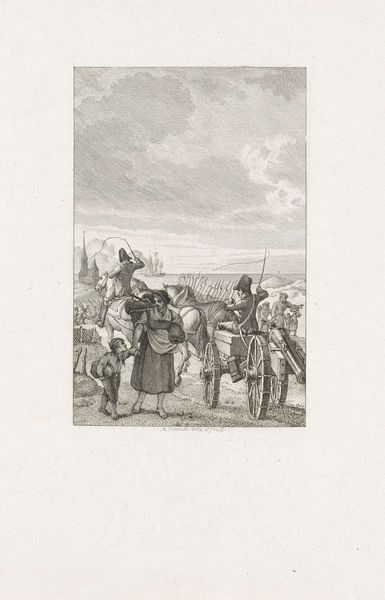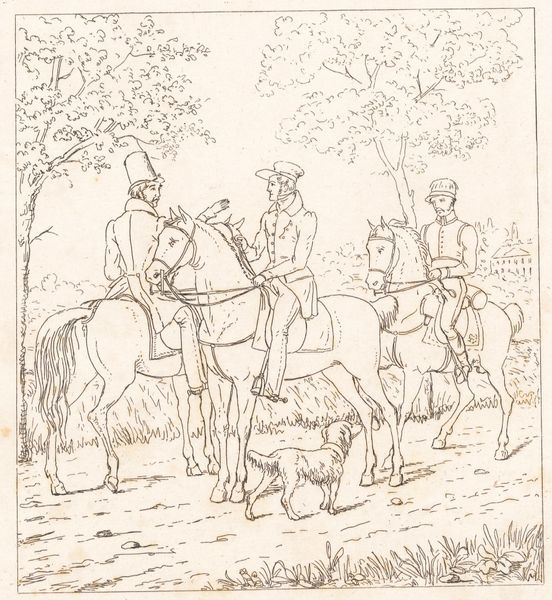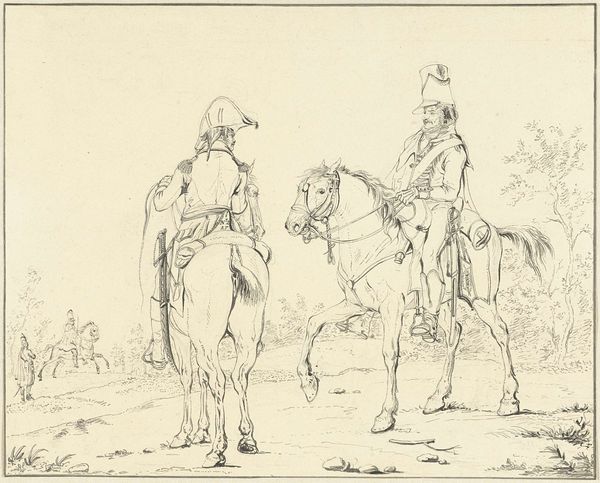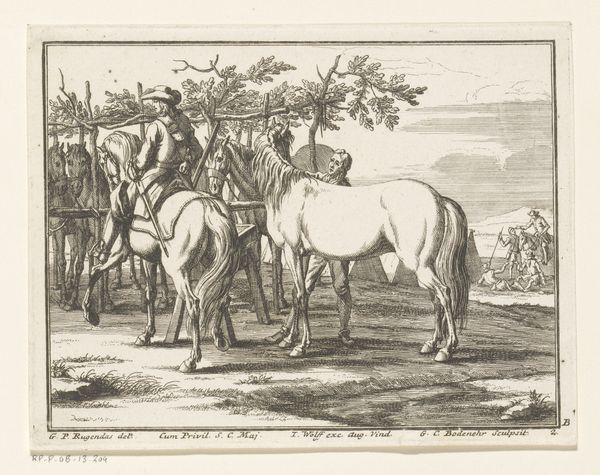
Dimensions: height 141 mm, width 89 mm
Copyright: Rijks Museum: Open Domain
Curator: Well, isn't this a charming little sketch? A delightful window into...oppression? Editor: Yes, "Cluwer door de Pruisische huzaren mishandeld," or "Cluwer mistreated by Prussian Hussars." Jacobus Buys captured this narrative with pen and ink, probably somewhere between 1734 and 1801. What do you make of it? Curator: Hmm, on first impression? Unease. The loose sketch style feels immediate, raw almost. Those Prussian soldiers atop their prancing horses – one even stepping on the poor Cluwer sprawled on the ground. The scale feels intentionally…uncomfortable. The tiny figures, a whole village even, relegated to the background... the poor sod right in your face. Editor: Notice the way Buys contrasts the serene, almost pastoral setting—the church steeple poking through the trees—with the brutal act in the foreground. These weren't anonymous soldiers enacting orders. There's intentionality in the details like the elaborate headwear of the Hussars and the deliberate trampling that turns this event into a symbol of power over individual liberty. This feels very much a staged piece of visual propaganda. Curator: It does feel a tad theatrical, doesn't it? That sprawled figure practically begs for our sympathy. And is that tiny crowd a baying mob...or terrified witnesses? It’s all a bit...much. Almost romantic in its embrace of drama. Editor: Romanticism loved its drama! But more importantly, look how the visual weight pulls you from that small spire up into that swirling mass of leaves above. Everything points to the central figures...literally weighing down on the fallen man, forcing your eye and attention exactly where the artist intends. Curator: So it's less a straightforward depiction of violence, and more a carefully constructed… tableau of injustice? A symbolic performance, where the characters play their roles in a historical drama? I find myself wondering if this is to highlight something Buys perhaps has experience with or is against in principle? Editor: Precisely! Buys doesn't just show the event; he interprets it. In his hand the mundane, through artful arrangements becomes loaded iconography. These figures stand in as signifiers within a much grander narrative of conquest and resistance, of victim and aggressor, and what that may mean when stripped of military titles, power, and position. Curator: It's sobering to realize how much visual storytelling fits into this small drawing. Perhaps that feeling of unease I had wasn’t so far off, in retrospect. It's a potent thing, really. Editor: Indeed. There are certain visual languages we all instinctively know. They remind us of how carefully, deliberately our history has been taught to us over centuries of art. And they show just how little some of those languages have evolved at all.
Comments
No comments
Be the first to comment and join the conversation on the ultimate creative platform.
